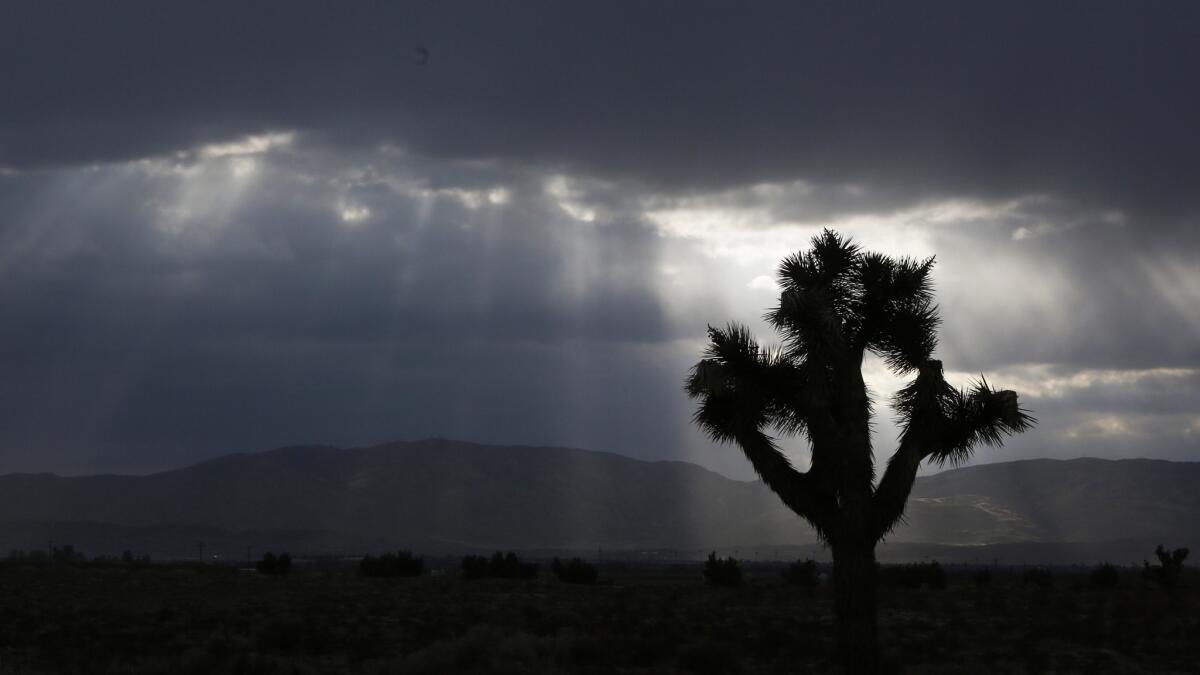California’s Joshua trees are threatened and the Trump administration is refusing to admit it

- Share via
Just two months ago, scientists released a study warning that climate change and other environmental stressors — including air pollution from the Los Angeles basin that’s feeding invasive, fast-burning grasses — are imperiling Joshua trees’ desert habitat. Without policies to reduce rising global temperatures or mitigate their effects, which could include human interventions to secure habitats, the scientists predicted “an almost complete elimination of Joshua trees by the end of the century.”
A dire warning, that — and it’s not the first. Other studies have concluded that the Joshua tree, which grows only in the Mojave Desert at elevations between 2,000 and 6,000 feet, faces likely extinction through the effects of climate change.
But on Wednesday, the U.S. Fish and Wildlife Service said, in essence, never mind. Reacting to a 2015 request from the WildEarth Guardians environmental advocacy group, the government determined that there are enough Joshua trees still out there to avoid having to add it to the “threatened” list under the Endangered Species Act (which the Trump administration is gutting), a designation that would give environmentalists more ammunition to protest projects that might add to the habitat’s stress.
Species are considered to be threatened if evidence indicates that they are likely to become endangered — that is, they are facing extinction — in the foreseeable future. That description seems more than apt for Joshua trees, which propagate only by seed, grow less than three inches a year and take a half-century to mature. The crisis here isn’t with the existing mature Joshua trees so much as it is with seedlings and future trees. A new plant sprouting today — typically just a few yards from a existing Joshua tree — won’t cast its first seeds until around 2070, assuming it isn’t killed as a sapling by drought. Climate is changing much faster than that. So what the scientists can see, the Trump administration refuses to. We’ll go with the scientists.
The scientific report, conducted by researchers from UC Riverside, Joshua Tree National Park and the Great Basin Institute in Reno, urges programs to preserve areas most likely to serve as “climate refugia.” Those would be habitats in which species can survive through otherwise inhospitable conditions, such as those at higher elevation, in water-retaining ravines and on northward-facing slopes.
Joshua trees hold a special spot in the hearts of Californians, and that makes them useful — much like polar bears and the warming Arctic — as symbols for the global degradation that human activity has caused, particularly through our reliance on burning fossil fuels for energy. All of L.A.’s freeways clogged with carbon-spewing cars are directly linked to the threat faced not only by Joshua trees, but to humankind itself.
This is the crossroads that we’ve driven ourselves to. And we know what direction we need to go, even if the Trump administration does not.
More to Read
A cure for the common opinion
Get thought-provoking perspectives with our weekly newsletter.
You may occasionally receive promotional content from the Los Angeles Times.






